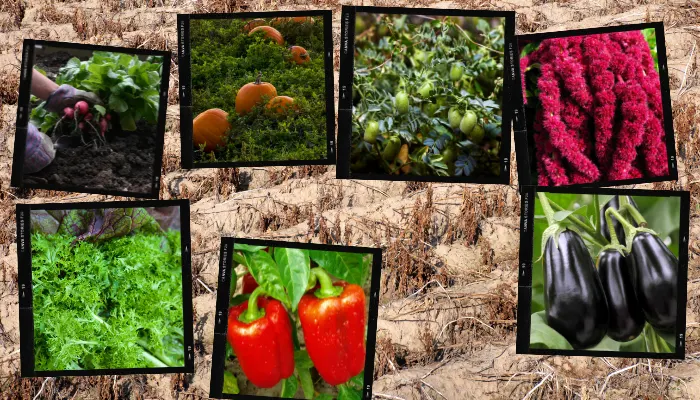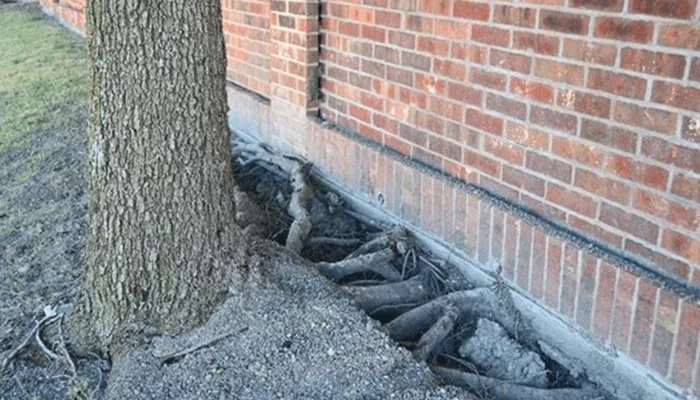Unlocking the secrets of vibrant gardens and lush lawns starts beneath the surface. Soil amendments are the unsung heroes of horticulture, transforming lackluster dirt into a nurturing haven for plant roots. Whether you’re wrestling with stubborn clay soil or watching water vanish into sandy expanses, the right amendment will work wonders.
If you’d rather sit back and let nature do its thing, you’re welcome to do so. Changing the form of soil naturally takes at least 500 years. With the right soil amendments, you can shave a strong 499+ years off of that!
Let’s get to know soil amendments so we can understand their benefits, types, and applications.
The Basics: Understanding Soil Amendments
Soil amendments are materials added to soil to improve its physical properties, enhancing water retention, nutrient availability, and overall soil structure. Think of them as conditioners for your garden soil. They create an environment where plant roots can thrive. Unlike fertilizers, which supply nutrients directly to plants, soil amendments focus on the soil itself, making it a better medium for plant growth.
In short, soil amendments are for the soil and fertilizers are for the plants. It’s the difference between a short-term strategy (fertilizer) and a long-term one (soil amendments).
Organic vs. Inorganic Amendments
Organic Amendments
Derived from living materials, organic amendments like compost, grass clippings, and animal manure enrich the soil with organic matter. This boosts microbial activity, improves soil structure, and enhances water retention. Compost tea, a liquid extract from compost, is a popular choice for delivering nutrients and beneficial microbes directly to plant roots. Organic fertilizers such as worm castings and manure-based composts also fall into this category, offering a sustainable way to improve soil fertility and quality.
Inorganic Amendments
These include materials like perlite, vermiculite, and sand. While they don’t add nutrients, they do improve soil texture and aeration, which will help long-term.
For instance, gypsum can help break up compacted clay soil, which will improve drainage and root penetration. Agricultural lime is another inorganic amendment that can adjust soil pH levels to make your soil more hospitable for plant growth.
Tailoring Amendments to Soil Types
Different soils have unique challenges. Here’s how amendments can address them:
Clay Soil: Dense and compacted, clay soil struggles with poor drainage and aeration. Organic matter like compost and finely shredded bark can lighten clay soil, enhancing water infiltration and root growth. Avoid adding sand, which can create a cement-like mixture. Soil conditioners like gypsum can also aid in breaking up clay particles, improving soil aeration and structure.

Sandy Soil: Quick to drain, sandy soil lacks water and nutrient retention. Adding compost, peat moss, or coconut coir increases its ability to hold water and nutrients, creating a more hospitable environment for plant roots. Soil conditioners that enhance water retention are particularly beneficial here.

Silty Soil: Prone to erosion, silty soil needs stabilization. Compost and aged manure can improve its structure, reducing erosion and enhancing nutrient retention. Cover crops can also be used to protect the soil surface and improve organic matter content.

Specialized Amendments
Sphagnum Peat Moss: Excellent for improving water retention in sandy soils but with environmental concerns due to its slow renewal rate. Consider using sustainably harvested sphagnum or alternatives like coconut coir.
Wood Chips and Bark: While slow to decompose, they’re ideal for long-term soil structure improvement. Be cautious with fresh wood products, which can tie up nitrogen as they decompose. Using aged or composted wood products can mitigate this issue.
Biosolids and Manure: These can be nutrient-rich, but often come with high salt content and potential pathogens. Only use composted or aged manure to avoid these issues. Fresh manure should be avoided due to the risk of human pathogens and high salt content, which can harm plant roots.
Worm Castings: A powerhouse of nutrients, worm castings release nutrients slowly and improve soil structure. They’re ideal for small gardens and potting mixes. These castings also help in maintaining a healthy soil ecosystem by promoting microbial activity.
Soil Type |
Benefit |
Best Amendments To Use |
|---|---|---|
| Clay | Improve Drainage | Sand, Gypsum, Compost |
| Increase Aeration | Perlite, Vermiculite | |
| Add Organic Matter | Sphagnum Peat Moss, Wood Chips and Bark | |
| Enhance Fertility | Biosolids and Manure, Worm Castings | |
| Sandy | Improve Water Retention | Compost, Sphagnum Peat Moss |
| Increase Nutrient Retention | Biochar, Organic Mulch | |
| Add Organic Matter | Compost, Biosolids and Manure | |
| Enhance Fertility | Worm Castings, Green Manure | |
| Silty | Improve Drainage | Sand, Perlite |
| Increase Aeration | Vermiculite, Rice Hulls | |
| Add Organic Matter | Compost, Wood Chips and Bark | |
| Enhance Fertility | Biosolids and Manure, Worm Castings |
Enhancing Soil pH and Nutrient Content
Acidic Soils: To raise soil pH, consider adding lime or wood ashes. This is crucial for plants that prefer alkaline conditions. Soil test results can guide the appropriate amount of amendment needed to achieve the desired pH level.
Alkaline Soils: Lower the pH with amendments like elemental sulfur or peat moss, creating a more suitable environment for acid-loving plants. Incorporating composted organic matter can also help in balancing pH levels.
Nutrient Deficiencies: Specific amendments can address nutrient gaps:
- Nitrogen: Compost, aged manure, and alfalfa meal.
- Phosphorus: Bone meal and rock phosphate.
- Potassium: Greensand and kelp.
3 Practical Tips for Using Soil Amendments
Soil Testing Is Necessary
Always start with a soil test to determine your soil’s pH and nutrient levels. This informs the type and amount of amendments needed.
Apply The Amendment Correctly
Spread amendments evenly and mix them into the top 6 to 8 inches of soil. For existing gardens, topdress the soil and gently incorporate the amendments without disturbing plant roots. This ensures that the amendments effectively improve soil structure and nutrient availability.
Timing Is Everything (as is usually the case)
The best time to amend soil is in the fall. This allows amendments to break down and integrate over winter. It also prepares the soil for spring planting, ensuring that the amendments have fully integrated into the soil.
Soil Amendments Best Practices Checklist
Understanding which soil amendments work best for different types of soil and garden needs can significantly enhance soil quality and plant growth. Here’s a practical checklist to help you get started:
For Clay Soil:
- Organic Matter: Compost, finely shredded bark, and sphagnum peat moss to improve soil structure and aeration.
- Inorganic Amendments: Gypsum to break up soil compaction and enhance drainage.
- Avoid: Adding sand to clay soil, as it can create a concrete-like texture.
For Sandy Soil:
- Organic Matter: Compost, coconut coir, and aged manure to increase water and nutrient retention.
- Inorganic Amendments: Vermiculite or perlite for better water retention.
- Additional Tips: Regularly add organic matter to maintain soil health.
For Silty Soil:
- Organic Matter: Compost and composted wood chips to stabilize the soil and reduce erosion.
- Inorganic Amendments: Pea gravel to improve drainage and reduce surface compaction.
For Acidic Soil:
- pH Adjustment: Agricultural lime or wood ash to raise pH levels.
- Organic Matter: Use compost to provide a balanced nutrient profile.
- Avoid: Using acidic amendments like sphagnum peat moss if soil pH is already low.
General Best Practices:
- Soil Testing: Always start with a soil test to understand your soil’s physical properties and nutrient levels.
- Application Rates: Follow recommended application rates for each type of amendment.
- Mix Thoroughly: Incorporate amendments into the top 6 to 8 inches of soil for best results.
- Seasonal Timing: Amend soil in the fall for integration over winter, preparing it for spring planting.
- Organic vs. Inorganic: Choose organic amendments for ongoing soil health and microbial activity; use inorganic amendments for specific physical improvements.
By following these best practices and understanding the role of various soil amendments, you can create a healthy, fertile environment for your garden plants. Whether you’re enhancing a vegetable garden or maintaining a lush lawn, the right soil amendments can make all the difference.
Frequently Asked Questions (FAQ) About Soil Amendments
What are soil amendments, and why are they important?
Soil amendments are materials added to soil to improve its physical properties, such as texture, water retention, and nutrient content. They play a vital role in creating a better environment for plant roots, enhancing soil health, and promoting healthy growth.
How do I know which soil amendment to use?
Start with a soil test to determine your soil’s pH level and nutrient content. Based on the test results, choose amendments that address specific deficiencies or physical issues, such as soil compaction or poor water retention.
Can I use my own compost as a soil amendment?
Yes, your own compost can be an excellent soil amendment. It adds organic matter, improves soil structure, and provides essential nutrients. Ensure your compost pile is well-maintained and fully decomposed before use.
Are synthetic fertilizers considered soil amendments?
Synthetic fertilizers primarily supply nutrients to plants and are not typically classified as soil amendments. However, they can be part of an overall soil management strategy to improve soil fertility and plant health.
What are some common soil amendments for vegetable gardens?
Common soil amendments for vegetable gardens include compost, aged manure, and organic fertilizers. These improve soil fertility, enhance microbial activity, and support healthy plant growth.
How often should I apply soil amendments?
The frequency of application depends on the type of soil, the type of amendment, and your gardening goals. Generally, organic amendments like compost can be applied annually, while other amendments may be used as needed based on soil test results.
What is humic acid, and how does it benefit soil?
Humic acid is an organic compound found in soil organic matter. It improves soil structure, enhances nutrient availability, and supports microbial activity, leading to healthier plants and better crop yields.
Can too much soil amendment harm my plants?
Yes, excessive use of soil amendments can lead to nutrient imbalances, soil compaction, and other issues. Always follow recommended application rates and guidelines to avoid excess salts and other harmful effects.
What are some natural alternatives to synthetic fertilizers?
Natural alternatives include compost, worm castings, and plant-based composts. These organic fertilizers provide essential nutrients and support soil health without the negative impacts of synthetic fertilizers.
How do I improve soil aeration in compacted soil?
To improve soil aeration, use amendments like compost, gypsum, and coarse sand. Regularly aerating the soil and incorporating organic matter can also help alleviate soil compaction.
Conclusion
Healthy soil is the cornerstone of a flourishing garden. Using the right soil amendments, you can transform poor soil into a rich, supportive environment for plants. Whether you’re dealing with clay, sandy, or silty soil, there’s an amendment that can help.
Remember, the goal is to create a balanced, nutrient-rich soil that promotes vigorous plant growth and robust root systems. So, roll up your sleeves and start amending—your plants will thank you!
















